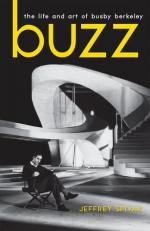|
This section contains 1,045 words (approx. 4 pages at 300 words per page) |

|
The premier dance director of 1930s Hollywood musicals, Busby Berkeley created outrageously fantastical production numbers featuring synchronized hordes of beautiful women moving in kaleidoscopic patterns that took audiences on surreal journeys away from the blues of their Depression-era realities. Berkeley took the spectacle traditions of popular American stage entertainments and the pulchritudinous aesthetic of the Ziegfeld Follies and extended them through cinematic techniques. His groundbreaking dance sequences revolutionized the way musicals were filmed by demonstrating how the camera could be used to liberate the directorial imagination from the constraints of theatrical realism. The distinctive look of his dancing screen geometries influenced the visual aesthetic of films, animation, television commercials, and music videos throughout the twentieth century. The term "busby berkeley" appears in the American Thesaurus of Slang, defined as "any elaborate dance number."
 Busby Berkeley with actress Connie Russell.
Busby Berkeley with actress Connie Russell.
Born William Berkeley Enos on...
|
This section contains 1,045 words (approx. 4 pages at 300 words per page) |

|


